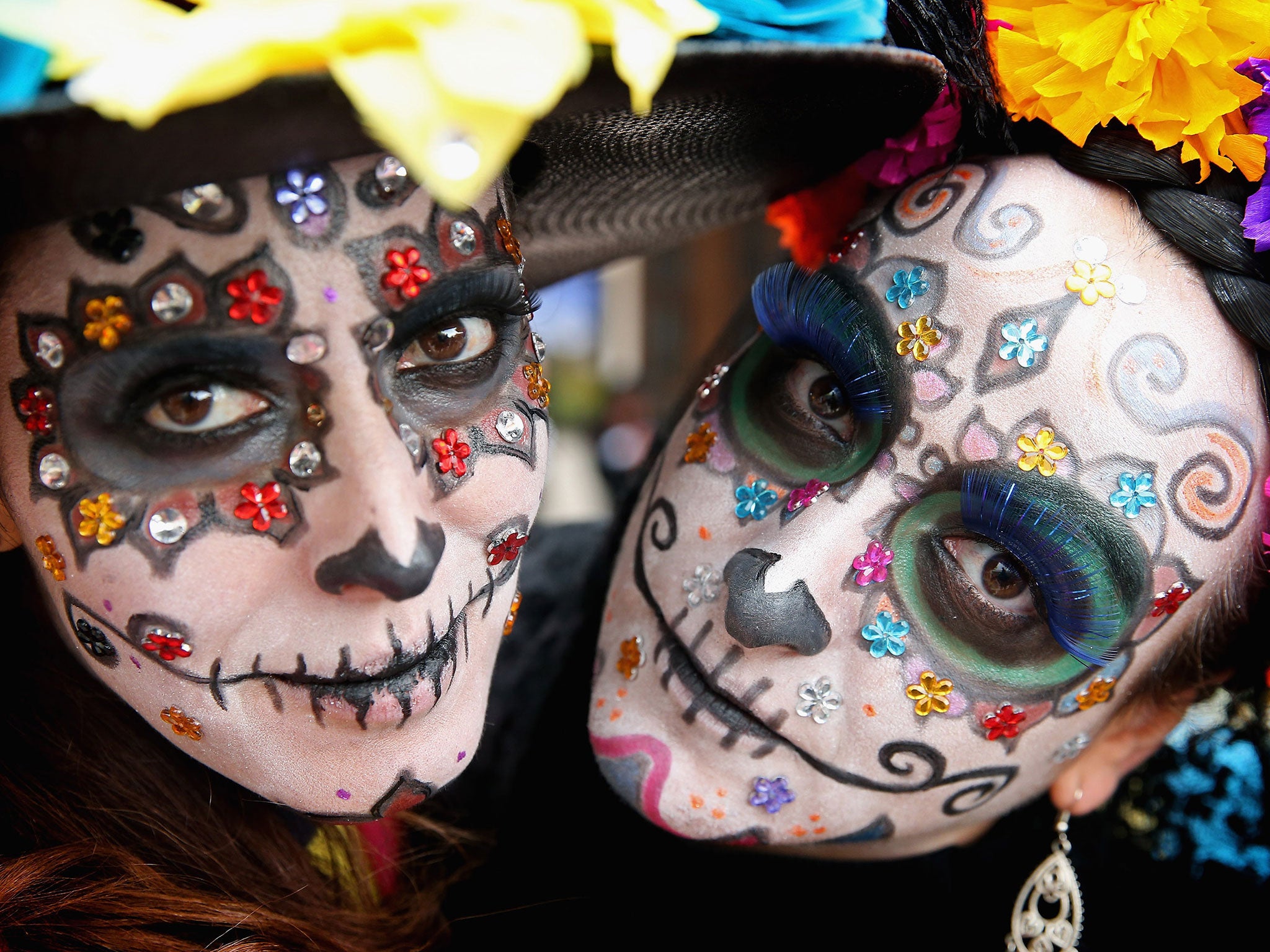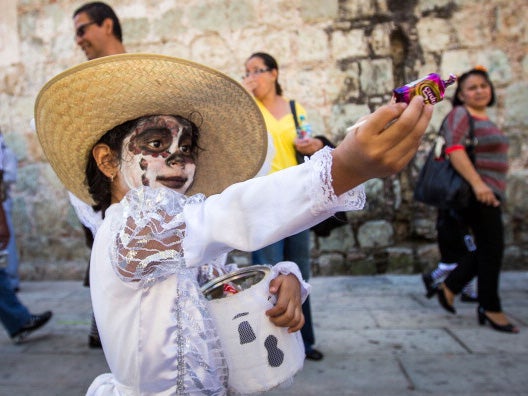Dia de Muertos: When is the Day of the Dead and how is it celebrated?
The festival celebrates the lives of loved ones who have passed away

Your support helps us to tell the story
From reproductive rights to climate change to Big Tech, The Independent is on the ground when the story is developing. Whether it's investigating the financials of Elon Musk's pro-Trump PAC or producing our latest documentary, 'The A Word', which shines a light on the American women fighting for reproductive rights, we know how important it is to parse out the facts from the messaging.
At such a critical moment in US history, we need reporters on the ground. Your donation allows us to keep sending journalists to speak to both sides of the story.
The Independent is trusted by Americans across the entire political spectrum. And unlike many other quality news outlets, we choose not to lock Americans out of our reporting and analysis with paywalls. We believe quality journalism should be available to everyone, paid for by those who can afford it.
Your support makes all the difference.The Day of the Dead, or Día de Muertos, is a two day holiday celebrated in central and southern Mexico.
It is a festive celebration of the lives of loved ones who have passed away.
What is it?
Modern observation of Día de Muertos developed from month-long Aztec celebrations that honoured the dead.
Over two days, families and communities gather and celebrate to lives of the deceased via food, drink and parties.
Believing the dead would be insulted by mourning or sadness, Día de Muertos celebrates the lives of the deceased with food, drink and parties.
The deceased are often remembered via altar decorations laden with sugar skulls, marigolds and their favourite foods.
Celebrations often take the form of street parties and parades, characterised by vibrant colours and festivities.
The most familiar symbols are skeletons and skulls, which are often portrayed in fancy clothes. Since 1910 one of the most famous images associated with Día de Muertos, is that of La Catrina.
La Catrina is the Lady of the Dead. Many Mexican women paint their faces to emulate her skeletal grin and dress in elegant clothes in homage to her.
She owes her lineage to the Azetec goddess of death but the current iteration of La Catrina was brought to life by political cartoonist José Guadalupe Posada and immortalised by the likes of Diego Rivera, husband to Frieda Kahlo.
What happens?
Día de Muertos combines indigenous Aztec ritual with Catholicism, which was brought to the region by Spanish conquistadores.
People often create altars in their homes to honour their deceased loved ones.
They also visit graveyards to clean the graves belonging to their relatives and friends, decorating them with flowers, photos, food and drink.
During these visits, people often tell funny stories about the deceased or share poems that poke fun at their quirks and habits.

When is it?
The official Day of the Dead is 2 November.
However, the holiday is celebrated between 31 October and 2 November to coincide with All Hallows' Eve, All Saints Day and All Souls Day, minor holidays in the Catholic Calendar.
Traditionally, 1 November is the day for honouring dead children and infants and 2 November is the day for honouring deceased adults.
What has it got to do with Halloween?
The festival starts on All Hallows' Eve, or Halloween.
In some parts of Mexico, some children roam the streets in costumes, knocking on people's doors to ask for a small gift of candles or money, similar to Halloween trick-or-treating.
But the festival has very different values to Halloween. Día de Muertos is about celebrating the life cycle.
Rather than promoting an implicit fear of ghosts and spooks returning from beyond the grave, Día de Muertos encourages participants to view death as a natural part of what it means to live.
Join our commenting forum
Join thought-provoking conversations, follow other Independent readers and see their replies
Comments